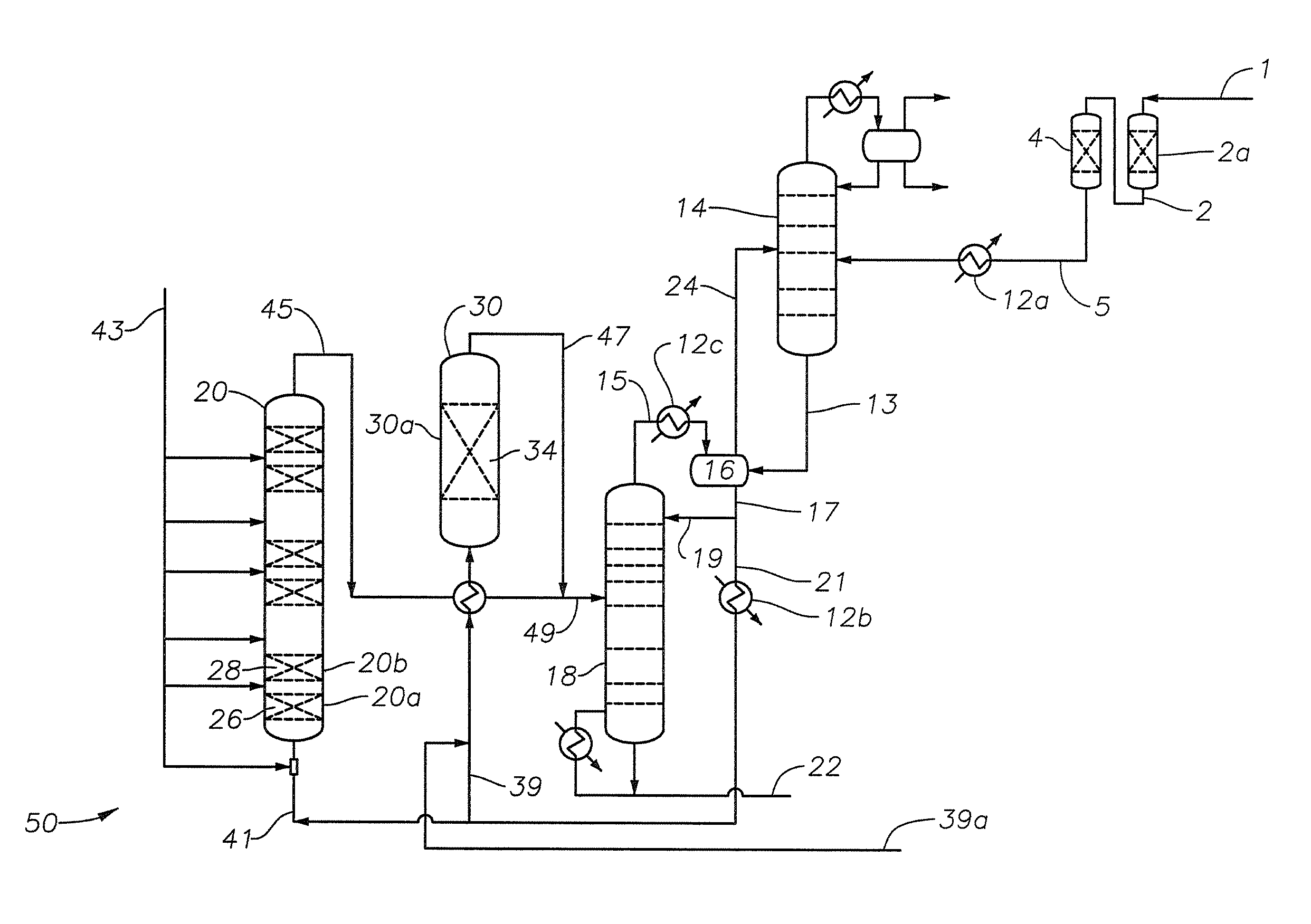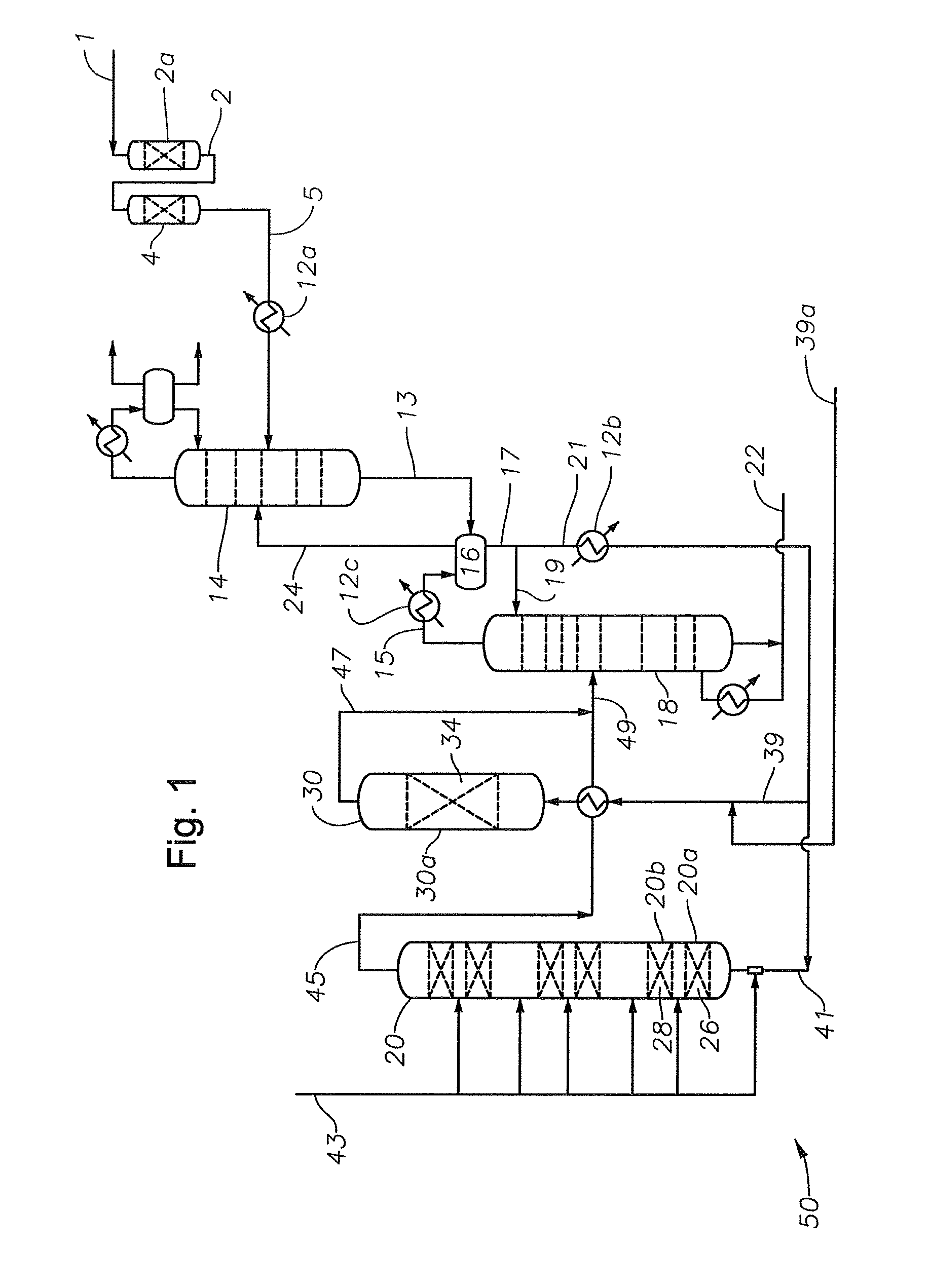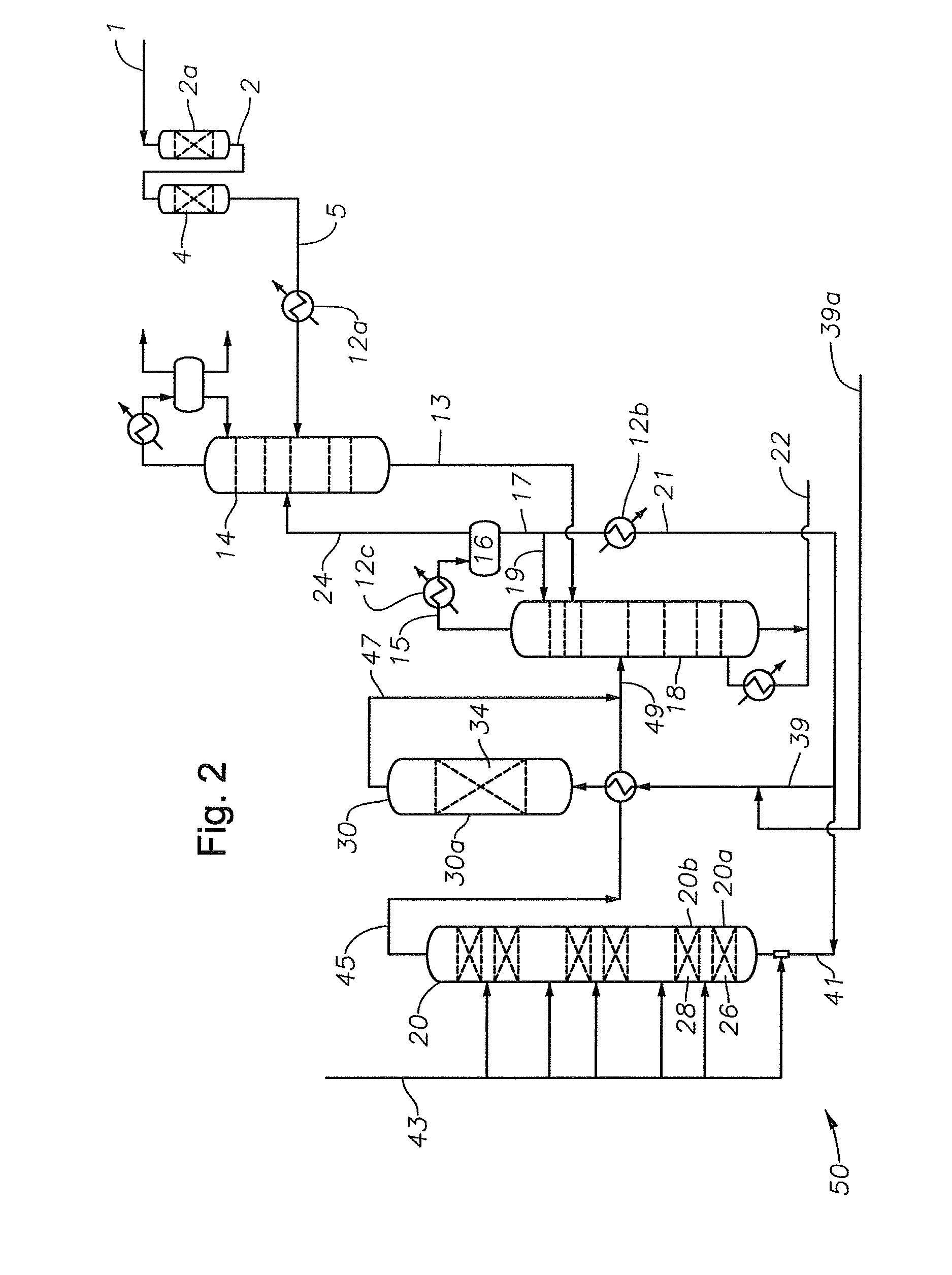Alkylated aromatics production
a technology of alkylated aromatics and aromatic compounds, which is applied in the direction of organic chemistry, hydrocarbon preparation catalysts, chemistry apparatus and processes, etc., can solve the problems of reduced catalyst ultimate life before replacement, increased catalyst regeneration requirements, and significant cost, so as to reduce the concentration of water and reduce the level of impurities
- Summary
- Abstract
- Description
- Claims
- Application Information
AI Technical Summary
Benefits of technology
Problems solved by technology
Method used
Image
Examples
examples 1-6
Measurement of Poison Capacity
[0142]In Examples 1-6, the poison capacity for collidine was determined by feeding collidine in the gas phase in which its uptake was recorded via thermogravimetric analyzer. The total uptake is one measure of a zeolite's capacity for adsorbing nitrogen-containing compounds.
[0143]
TABLE 1Approximate PoisonZeolite ContentCapacityExampleCatalyst(%)(meq / g)1MWW8080-130(Comparative)(MCM-49)2Beta80701(Non-MWW)3USY80925(Non-MWW)4ZSM-1265531(Non-MWW)5Mordenite65385(Non-MWW)6Solid PhosphoricNone501Acid(Non-MWW)
[0144]As can been seen, Table 1 shows that the poison capacity using collidine for a catalyst having MWW topology is much less than that for catalyst having non-MWW topology.
examples 7 and 8
[0145]In Examples 7 and 8, the capacity of an MWW and zeolite beta catalysts to absorb an N-formyl morpholine (NFM) impurity was determined. Two alkylation reactors were placed in series with an NFM impurity-containing benzene feed supplied to a first alkylation reactor having first alkylation catalyst (Rx 1). The effluent of Rx 1 was the feed to a second alkylation reactor having a second alkylation catalyst (Rx 2). Rx1 and Rx2 each reactor had a separate ethylene injection points and this configuration is like the first two stages of a multi-stage series-connected alkylation reactor. For these experiments Rx 1 was a reactive guard bed and was the first reaction zone in an alkylation reactor. Deactivation of Rx 2 was used to indicate when Rx 1 has achieved its maximum poison capacity and catalyst poisons were no longer completely retained by Rx 1. NFM was fed at a concentration of 0.3 wt wppm based on the weight of the benzene feed.
[0146]The NFM absorption capacities in the Example...
PUM
| Property | Measurement | Unit |
|---|---|---|
| pore size | aaaaa | aaaaa |
| temperature | aaaaa | aaaaa |
| temperature | aaaaa | aaaaa |
Abstract
Description
Claims
Application Information
 Login to View More
Login to View More - R&D
- Intellectual Property
- Life Sciences
- Materials
- Tech Scout
- Unparalleled Data Quality
- Higher Quality Content
- 60% Fewer Hallucinations
Browse by: Latest US Patents, China's latest patents, Technical Efficacy Thesaurus, Application Domain, Technology Topic, Popular Technical Reports.
© 2025 PatSnap. All rights reserved.Legal|Privacy policy|Modern Slavery Act Transparency Statement|Sitemap|About US| Contact US: help@patsnap.com



